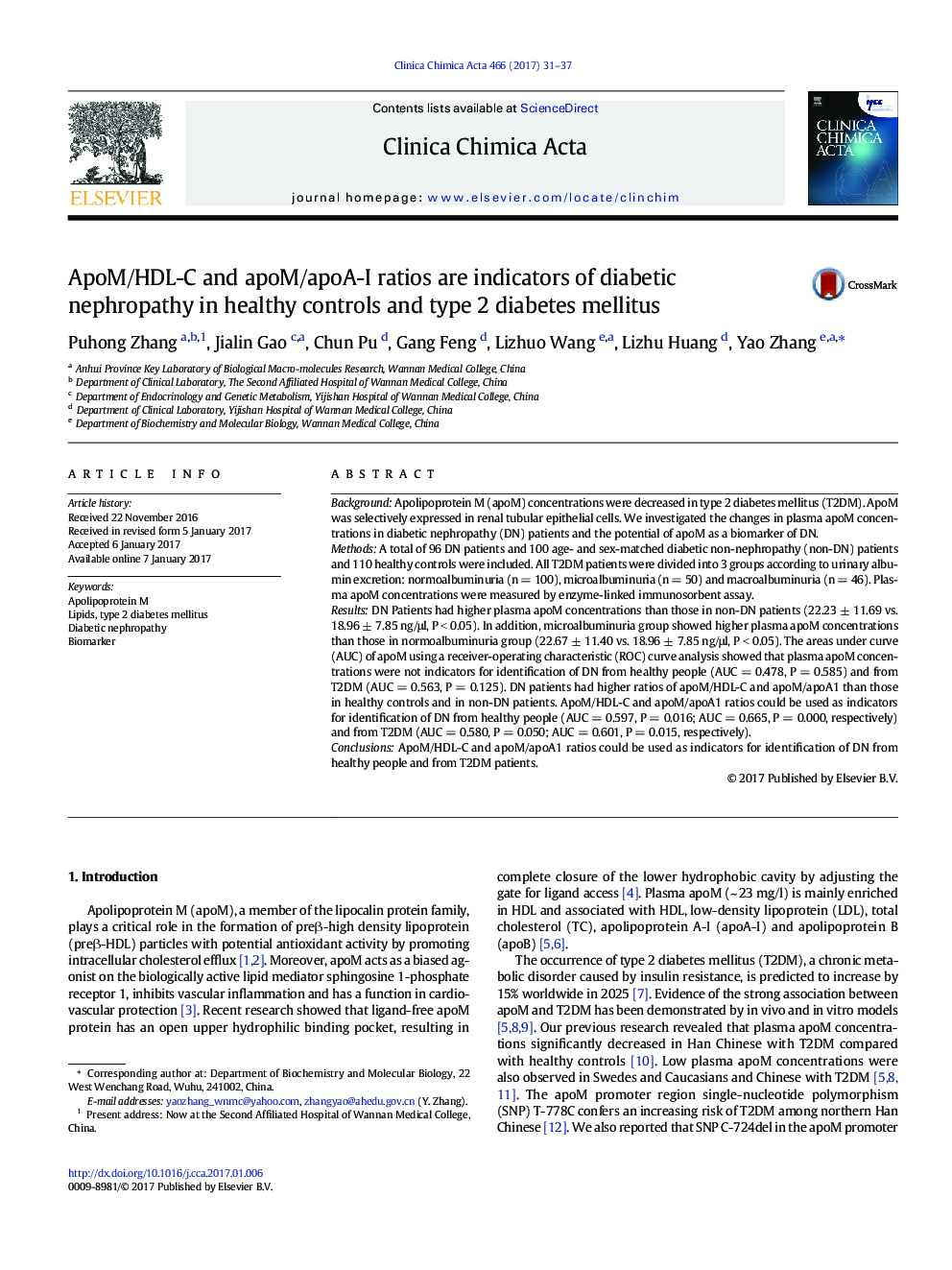| Article ID | Journal | Published Year | Pages | File Type |
|---|---|---|---|---|
| 5509738 | Clinica Chimica Acta | 2017 | 7 Pages |
â¢Plasma apoM concentration was elevated in the patients with diabetic nephropathy.â¢ApoM/HDL-C and apoM/apoA-I ratios are surrogate markers of diabetic nephropathy.
BackgroundApolipoprotein M (apoM) concentrations were decreased in type 2 diabetes mellitus (T2DM). ApoM was selectively expressed in renal tubular epithelial cells. We investigated the changes in plasma apoM concentrations in diabetic nephropathy (DN) patients and the potential of apoM as a biomarker of DN.MethodsA total of 96 DN patients and 100 age- and sex-matched diabetic non-nephropathy (non-DN) patients and 110 healthy controls were included. All T2DM patients were divided into 3 groups according to urinary albumin excretion: normoalbuminuria (n = 100), microalbuminuria (n = 50) and macroalbuminuria (n = 46). Plasma apoM concentrations were measured by enzyme-linked immunosorbent assay.ResultsDN Patients had higher plasma apoM concentrations than those in non-DN patients (22.23 ± 11.69 vs. 18.96 ± 7.85 ng/μl, P < 0.05). In addition, microalbuminuria group showed higher plasma apoM concentrations than those in normoalbuminuria group (22.67 ± 11.40 vs. 18.96 ± 7.85 ng/μl, P < 0.05). The areas under curve (AUC) of apoM using a receiver-operating characteristic (ROC) curve analysis showed that plasma apoM concentrations were not indicators for identification of DN from healthy people (AUC = 0.478, P = 0.585) and from T2DM (AUC = 0.563, P = 0.125). DN patients had higher ratios of apoM/HDL-C and apoM/apoA1 than those in healthy controls and in non-DN patients. ApoM/HDL-C and apoM/apoA1 ratios could be used as indicators for identification of DN from healthy people (AUC = 0.597, P = 0.016; AUC = 0.665, P = 0.000, respectively) and from T2DM (AUC = 0.580, P = 0.050; AUC = 0.601, P = 0.015, respectively).ConclusionsApoM/HDL-C and apoM/apoA1 ratios could be used as indicators for identification of DN from healthy people and from T2DM patients.
